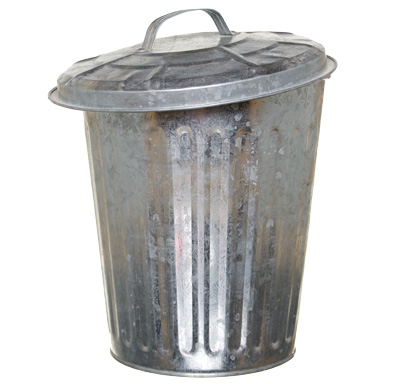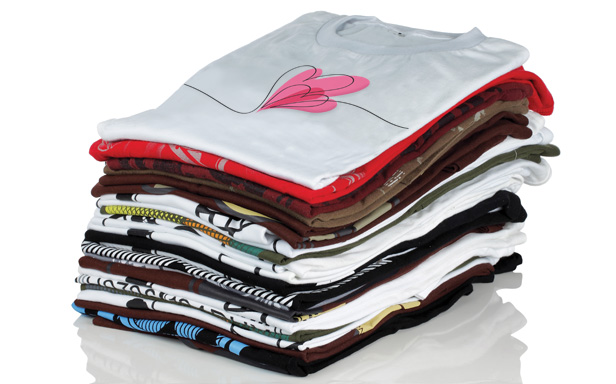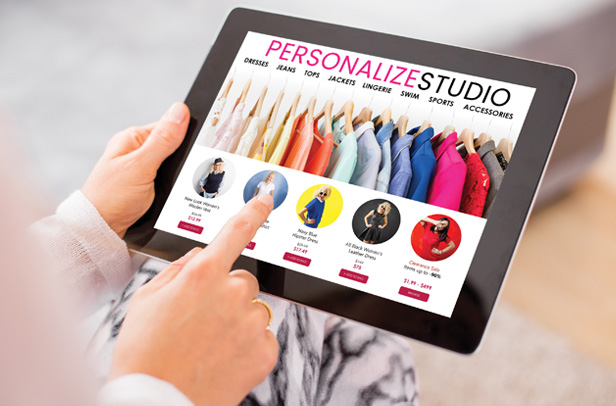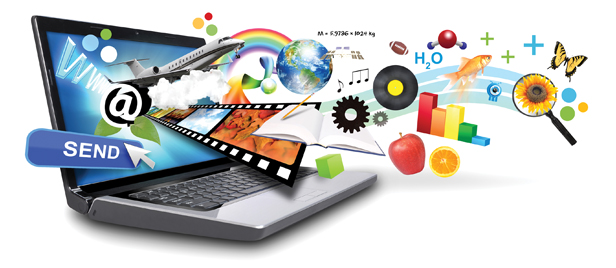Commentary April 17, 2024
#Counselor70: 6 Predictions Counselor Magazine Got Right (and 4 We Didn’t)
Over the last 70 years, our magazine has done more than its share of prognosticating – with varying degrees of success.
The editors of Counselor have never been shy about playing fortune teller for the promo industry, and with seven decades of content under our collective belt, there’s a slew of speculation to sort through. Here are 10 times we attempted to predict the future – six of which ended up being right on the money.
1960
‘Junk’ Hurts Promo’s Image

“Get rid of the junk!” proclaimed the editor’s letter in the January 1960 issue of Counselor, which went on to slam “poorly designed, poorly manufactured, poorly packaged” business gifts that are “presented haphazardly, with little thought and less planning.” If, however, the industry could rise above its image problem, great opportunity was on the horizon: “During ‘The Golden Sixties’ the unique advantages of business gift-giving and specialty advertising will become more and more necessary to the well-rounded promotional program.”
RIGHT: Mad Men-era Counselor pulled no punches, but the editors’ predictions were spot-on – both about the harm poor-quality promo can do and the power a well-executed campaign has. Even today, industry thought-leaders rail against the damage cheap “brandfill” does on both an environmental and reputational level.
1977
Cheap Plastic Stuff Will Go Bye-Bye

The gas crisis of the 1970s and the burgeoning environmentalism movement spurred Counselor to take a long, hard look at the survival of the promo industry. “The nation will have to alter its energy habits now or risk catastrophe,” writer Jeri Barford opined in a July 1977 “future feature,” part of the publication’s very first State of the Industry. Later in the piece, Barford – citing the nonrenewable nature of oil and petroleum-based products – stated bluntly that “inexpensive plastic specialties will become obsolete.”
WRONG: Or maybe half right. In 2024, there’s still an abundance of promotional products derived from plastic, but there’s also a growing awareness that change is necessary. Consider the rise of reusable drinkware and totes meant to replace single-use plastic bottles and bags, and the trend of branded merch made of recycled plastics or natural materials.
1978
Americans Can’t Get Enough T-Shirts

For decades, apparel was a bit player in the promo marketplace. That changed starting in the '70s. A confluence of factors – from the casualization of fashion to the advent of modern screen-printing technology – helped shift the humble tee from underwear to a closet staple and promotional hero. “Americans seem to have an insatiable desire to identify themselves with the slogans and photos on the T-shirts they wear,” according to an article that appeared in the April 1978 issue of Counselor. Indeed, Editor Paul A. Camp stated, “Today everyone from dictators to ex-presidents’ wives, from ‘head’ shops to such staid giants as the New York Life Insurance Company use T-shirts to promote their images and hype their products.”
RIGHT: Nearly half a century later, Americans are still wearing their heart on their short-sleeves. T-shirts mark milestones, commemorate vacations, outfit events, proclaim allegiances and so much more. It’s no wonder that the apparel basic is the No. 1 product category in the industry, accounting for $4.5 billion (17.1%) of overall promo product sales, according to the most recent Counselor State of the Industry data.
1980
‘Electronic Specialties’ Are the Future

At the onset of the 1980s, many promo pros were hot on technology. A January 1980 article making predictions for the coming decade and beyond envisioned a world where distributors would be selling “pocket television sets, pocket computers and solar-powered calculators.” Electronic advertising pieces would be sent via snail mail to potential buyers. “Recorded messages, pictures of products and visual read-outs would replace personal calls,” according to the piece.
RIGHT: In a roundabout way, Counselor predicted the rise of the smartphone: a pocket TV, computer, calculator (and more) all in one handy, portable device. And while distributors aren’t selling the phones themselves, electronics and mobile tech are both among the top 20 product categories offered in the industry, according to the 2023 Counselor State of the Industry report.
1986
Personalization Is Paramount

What’s better than receiving a thoughtful, useful and stylish promotional product? How about something that’s been personalized to your tastes and includes your name? A feature article in the July 1986 issue of Counselor explored the idea of personalization in depth. Bernice Estka from awards manufacturer R.S. Owens stated in the piece: “When people see their name in print, it means a lot. It’s telling the world and anyone who sees it that this is an important person.”
RIGHT: The power of personalization has only grown in the ensuing decades, with advances in technology enabling mass customization, on-demand production and easy-to-use online design engines, allowing people to put their own spin on apparel, accessories and other products. In 2021, for example, Ralph Lauren launched a “made-to-order” polo site that let consumers choose colors, text and other options to create a unique, but still “designer” shirt. Personalization is still so huge, in fact, that Counselor predicted last year it would be one of the 10 biggest trends in promo in 2024.
1991
ASI Will Get a New Name

In the early 1990s, SAAInternational announced that it would be changing its name, sparking (sometimes heated) discussion that spanned several issues of Counselor. Leadership from SAAI (which would eventually become PPAI) noted that “the consensus is specialty advertising has not engendered an understanding in the marketplace.” Initially, the organization was considering the name “Promotional Products Marketing Association,” and in a September 1991 editorial, ASI’s then-President Marvin Spike was enthusiastic about the prospect: “I can already envision ASI’s own new Promotional Products Marketing Institute letterhead, throwing our full support of that denotation throughout the entire industry.”
WRONG: Obviously, the Advertising Specialty Institute never followed through with Spike’s tongue-in-cheek suggestion, but it’s true that the term “promotional products” has become widespread, accepted and understood in the ensuing decades – though in recent years, “branded merch” seems to be giving it a run for its money.
1995
The ‘Information Superhighway’ Will Transform Business

In a January 1995 cover story titled “Hitchhiker, Rider or Roadkill?” writer Jamie B. Spigler described the nascent internet as a “high-capacity pipeline of interconnected networks that transmit data, voice, video, facsimile and other mass mediums between separate locations.” Eventually, it would “incorporate all forms of communication such as video and audio entertainment, information exchange, marketing and videoconferencing.” In the piece, technology author Michael Strangelove noted that in the future the internet would be “a necessity of doing business.”
RIGHT: Despite the almost quaint, outdated nomenclature, the information superhighway in the 21st century has taken shape in much the way Counselor described (sans the fax, perhaps). Data, voice and video from around the world are available at the press of a fingertip, and businesses that haven’t embraced various digital technologies have often suffered for their lack of foresight.
2000
SUVs Are Just a Fad

An article on “millennial marketing” from the February 2000 issue of Counselor posited that SUVs were on their last legs, or perhaps, wheels. “As boomers age and their kids get older, the novelty and necessity of SUVs will wear off, and the downsides will magnify,” according to the piece.
WRONG: Good thing Counselor isn’t representing the automotive industry. Out of the 15.5 million vehicles sold in the U.S. last year, more than 12.3 million – or about 79% – were classified as SUVs, according to MotorTrend. A May 2020 New York Times story on Americans’ continued preference for sport utility vehicles attributed it to “practicality, ride height, baby boomers and, well, vanity.”
2014
Telecommuting Will Become Commonplace

A decade ago, Counselor pulled out its crystal ball to make 24 bold predictions for how business would look in 10 years. One of the most prescient was this: “All employees will work from home at least half the week, and many companies will become complete virtual organizations.” In a similar vein, the article predicted that many presentations would be done via videoconference, and that salespeople would travel less frequently than in the past.
RIGHT: Flexibility in where and how to work has become one of employees’ most-sought-after perks, with the pandemic accelerating the technology adoption required to enable seamlessly hybrid offices. Consider that nearly 90% of distributors on our 2024 Best Places to Work list reported having a hybrid or fully virtual work policy.
2019
The Promo Industry Would Grow in 2020

In late 2019, we published a lengthy article detailing 20 predictions for the coming year. As with any such article, there were hits and misses. The promo industry at the time was poised to seize opportunities and revving up for a year of growth. “The majority of industry leaders Counselor spoke with believe that annual sales will again increase, though there’s no consensus on by how much,” wrote Digital News Director Christopher Ruvo. “Forecasts for the rise range from a modest 1% to 3% to bullish predictions of 5% to 10%.”
WRONG: While the first three months of 2020 were indeed a bullish time for the promo industry, no one was prepared for the COVID-19 pandemic and its far-reaching effects on the global economy. Industry sales dropped nearly 20% – down to $20.7 billion – in 2020, and it wasn’t until 2022 that promo revenue bounced back to pre-pandemic levels.

